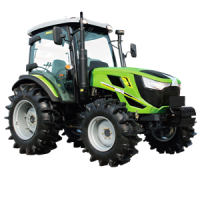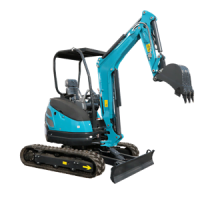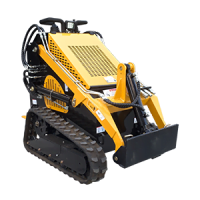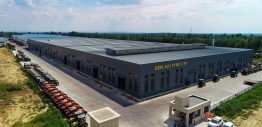Einführung
Der moderne Traktor hat die Landwirtschaft revolutioniert und im letzten Jahrhundert unglaubliche Fortschritte bei der landwirtschaftlichen Produktivität ermöglicht. Traktoren sind auf Bauernhöfen und Ranches auf der ganzen Welt unverzichtbare Geräte. Sie nutzen leistungsstarke Motoren und robuste Antriebsstränge, um schwere Lasten und Antriebsgeräte für Bodenvorbereitungs-, Pflanz-, Anbau-, Sprüh-, Ernte- und Transportaufgaben zu transportieren.
In this blog post, we will explore the transformational impact of tractors on agriculture through:
- A Brief History of Tractor Development
- Key Capabilities and Benefits
- Specialized Tractor Types
- Innovations in Tractor Technology
- Selecting the Right Tractor
- The Future of Tractors
- FAQs
Appreciating tractors as indispensable “workhorses” providing the muscle for feeding a growing global population sets the stage for later sections covering these versatile machines in detail.
A Brief History of Tractor Development

Mechanized agriculture began when steam-powered plowing engines started replacing horse teams in the 1850s. But the tracks and cables of these cumbersome machines often damaged soils. With the advent of the lightweight, affordable Fordson in 1917, tractors suitable for small farms took hold.
Rapid engineering advancements followed, with new models boasting more power, range of implements and operator comforts. Key milestones included:
- 1932 – Diesel-powered tractors emerge for even more torque
- 1960s – Hydraulic three-point hitches facilitate implement attachments
- 1970s – Quadtrack vehicles with four-wheel drive and steering enable superior traction
- 1980s – Cabins with climate control and suspension seats adopt auto styling
Today’s tractors would be nearly unrecognizable to early 20th century farmers. Yet they continue building on that legacy of innovation.
Key Capabilities and Benefits

Tractors confer many advantages over animal power as the preferred prime movers on farms:
Powerful – High horsepower diesel engines ranging from 20 to over 600 HP enable heavy implements to cut through tough soil and plant residue.
Efficient – Tractors complete field tasks faster than manual labor, increasing productivity. Auto-guidance systems boost efficiency even further.
Adaptable – With rear 3-point hitches, PTO shafts, and front loaders, tractors readily attach to a wide variety of implements year-round.
Durable – Rugged transmissions, 4WD drivetrains, protective frames and corrosion resistant finishes allow decades of reliable service across all conditions.
Comfortable – Quiet, heated cabs with suspension, Bluetooth connectivity and touchscreens keep operators productive and safe.
In short, modern tractors provide the versatile brawn for all types of farming operations thanks to specialized engineering tailored to agricultural demands.
Specialized Traktor Arten
Tractor models serve different primary applications depending on their configuration:
Reihenfruchttraktoren – With skinny front wheel widths and high ground clearance, row crop tractors maneuver easily down narrow planting rows across vast fields.
Kompakttraktoren – Equipped with front loaders and ranging 25-100 HP, utility tractors handle chores from mowing and digging to spreading fertilizer and snow removal.
High Horsepower Tractors – Big, powerful tractors exceeding 225 HP pull massive seeding tools and grain carts across thousands of acres during short seasonal windows.
Spezialtraktoren – Unique designs like high-clearance orchards models or autonomous driverless prototypes match specialty crop needs.
Matching the right tractor duties maximizes operational efficiency and long-term value.
Innovations in Tractor Technology
Tractor evolution continues, with some key innovations including:
Autonomous Driving – Tractor rovers following pre-programmed GPS routes without an operator reduce labor costs while enabling automation for specialized crops.
Alternative Fuels – Methane-powered tractor engines or electric battery packs will help transition away from diesel as environmental priorities grow.
Connectivity & Data Analysis – Sensors conveying operational metrics to the cloud fuel emerging “smart farming” practices via real-time analytics.
Enhanced Comfort – Cabins will continue rivaling high-end SUVs, with heated/cooled seats, premium audio and optimized ride quality for long daily shifts.
Electrification – Higher system voltages will enable electric drives for attachments, further reducing mechanical complexity.
Blending computing power with engineering brawn will define the next generation of tractors.
Selecting the Right Tractor
With such a vast range of tractor makes, models, sizes and options, purchasing the ideal match requires considering:
Table 1. Key Criteria for Selecting Tractors
| Tractor Feature | Selection Guidance |
|---|---|
| PS | Match engine HP to heaviest anticipated implements |
| Übertragung | Gear or hydrostatic depends on preference |
| 2WD vs 4WD | Heavier loads need 4WD, lighter applications suit 2WD |
| PTO-Optionen | Standard, economy or dual PTO to power attachments |
| Hydraulics Type | Open center or closed center hydraulic flow rates |
| Hitch Category | Categories 1-4 support different sized implements |
| Technology Extras | Auto-steering? Telematics compatibility? |
Defining must-have versus nice-to-have features based on farm implements and terrain helps narrow the options. On-site demos then determine the best fit.
The Future of Tractors
While predictions vary on what future tractors will look like or the fuels powering them, some consensus views stand out:
Increasing Autonomy – Tractors driving themselves via GPS, allowing one operator to monitor multiple machines, will become more prevalent by 2030.
AI Integration – Deep learning algorithms processing sensor data will help tractors adapt to changing conditions in real-time.
Electrification Prioritization – Transitioning from diesel engines to electric or alternative fuel power will accelerate due to climate change concerns.
Connectivity Improvements – Seamless data integration via cloud platforms will enable informed management of tractor fleets, remote diagnosis of problems, and integration of tractors into broader “smart” farm ecosystems.
The coming decades will see tractors transform from mechanical workhorses into integral nodes within digitally interconnected agricultural systems – yet some familiar attributes like durability, utility and driver comfort will persist.
Fazit
Tractor technology has progressed enormously since the early days of mechanized agriculture, yet these machines retain their core purpose of delivering raw power, traction, and versatility across countless farming tasks.
Understanding modern tractor capabilities and innovations is key for farm owners seeking to improve operational efficiency and productivity through the equipment providing the foundation for their livelihoods. By matching the tractor appropriately to the unique combination of implements and land at hand, these machines will continue serving agriculture reliably for years to come while adopting smarter technologies.
FAQs
What is the average lifetime of a modern farm tractor?
The typical service lifespan of a properly maintained tractor is 8,000-12,000 hours. For an average usage of 800 hours per year, that translates into 10-15 years of reliable duty.
Do all farm tractors require specialized operator training?
Basic tractor operation is reasonably straightforward – especially models under 40 HP used for light-duty work. But safety training focused on overhead power lines, slopes, highway transport and PTO implements is strongly recommended for all tractor drivers.
How much does a brand new farm tractor typically cost?
Tractor pricing varies greatly depending on engine horsepower, features and intended use. Small 20 HP tractors may cost under $15,000, while large row crop tractors run $250,000+, and massive 400 HP four-wheel drive models approach $500,000.
Soll ich einen neuen oder gebrauchten Traktor kaufen?
Used tractors can provide huge cost savings over brand new models. The optimal choice depends on your budget, desired features, risk tolerance, maintenance skills and application. Weigh all factors carefully when deciding.





-1.png)